Aag (1948): Raj Kapoor's burning idealism
Publié le 12 Août 2008
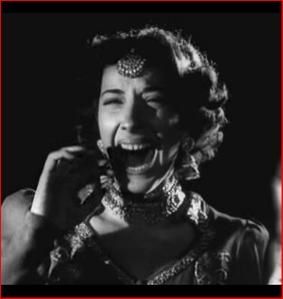
Aag: fire. In this Early Raj Kapoor Movie, fire is a symbol of love, naturally, but also creation and destruction. It is fit that this film stands at the beginning of Raj Kapoor’s career (his first movie as an adult was in 1943), since there is a strong stance on the autonomy of the artist and creator. Indeed, doesn’t Kewar (Raj Kapoor) refuse to follow the path laid down for him by his family, and justify it by insisting on freedom and the refusal of the easy but inauthentic future? Similarly, Raj Kapoor’s cinema probably wanted to affirm its independence at a time when young India emerged on the world scene. Here's what he wrote about the movie: "I'll never forget Aag because it was the story of youth consumed by the desire for a brighter and more intense life. And all those who flitted like shadows through my own life, giving something, taking something, were in that film." (reference)

But let me give you the story. It’s in fact a long flashback, told by a husband, whose face is badly burnt, to his young wife on their wedding night. She has been shocked by his appearance, and so he goes back in the past to explain. Kewal is the only son of his two protective parents, who wish to give him a good education. But the young boy (Shashi Kapoor) is completely infatuated with the stage, and together with his little neighbour Nimmi, wants to devote his life to it. He will be her Romeo and she her Juliet (that’s what the subtitles refer to; I’ve not able to catch the names of the characters that they speak about).

Kewal does nevertheless go to college, but fails at his exams. It is at that moment that we have the confrontation with his parents about his future, and that he dramatically refuses his social destiny. He leaves home, and after a few days’ aimless roaming, he spots the entrance of a theatre hall, and goes in, sliding through a door at the back. His melancholy monologue is overheard by the owner of the hall, Rajan, (Prem Nath), who thinks he has enough mettle to do something with his unused theatre.
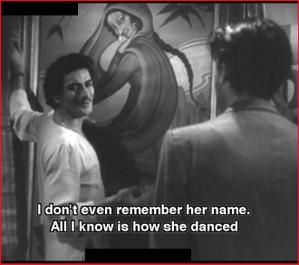
Then starts the “romantic” part, because of the love triangle which develops between Rajan, who is also a painter, Kewal, and Nimmi (Nargis), who is not Kewal’s first love, but a gifted young actress he as director has hired for the leading role in his first play, entitled “Aag”. Upon recruiting her, we learn Kewal’s criteria for acting: the emotion which the actor creates must not be based on exterior beauty, but must come from the soul. Only the soul can express the truth which true creation needs.
Nimmi quickly falls in love with Kewal, who, if he courts her, does it more with an artist’s detachment than real devotion. But Rajan is really smitten by her. As a painter, he’s obsessed with harmony and beauty, and she corresponds to the ideal face he has been dreaming of. Of course he gets very jealous of Kewal, who comes down to earth when discovering about the intensity of the two feelings that have been burning so close to him: Nimmi’s love for him (but mostly based on his pleasing appearance, she says), and Rajan’s passion for Nimmi, also based on her striking beauty.
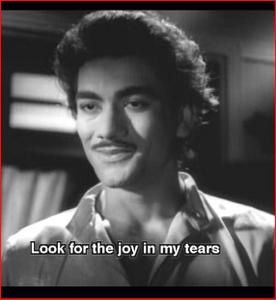
We can already sense some of Raj Kapoor’s message: he starts his cinematographic career by stressing the dangers of stories and shows which base their appeal on the heroes’ and heroine’s physical attractiveness. Such a basis risks forgetting the essential purpose of drama: to move the heart, to educate and please spectators with real spiritual values. Only the actors’ personal and moral involvement in their art can reach this goal. The cinema must guide towards truth and beauty, but these two go together. Truth disconnected from beauty is desiccating; beauty on its own is artificial and ambiguous.
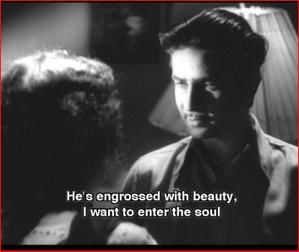
What will Kewal do when he learns that his ideal project is hit by the very dangers he was trying to avoid? As passionate as the other two, he resorts to an irrational solution. The back of my DVD box says that “when he discovers that Rajan is also in love with her, he steps aside only to realise that Nimmi loves him. Kewal gets badly scarred when trying to douse a fire in the theatre. A horrified Nimmi switches loyalties and chooses Rajan.” But this summary omits the crucial element: Kewal decides to disfigure himself using a torch, and the pain makes him drop it, which ignites the fire, at the very moment when Nimmi is playing her role on stage, and singing:
“The world of love I have created is maligned”
Why did you love me? Why did you desert me?
In hope I pine, and my heart burns.
To burn me, is that why you deserted me?”
So what has happened is in fact a complex sacrificial ritual: Kewal has used real fire to destroy the origin of a fire he has unwittingly ignited: Nimmi’s love for him, based (he thinks) on beauty alone. And his face is this origin. It has to be sacrificed on the altar of ideal art! But watching Nimmi play her role, and living the part with the words cited above, Kewal understands (we see him cry) that he is responsible for her inner burning and suffering, and may also be burning himself in punishment for having caused her such pain (which is ultimately a proof that he loves her). And the burning down of the theatre means that art based on artifice must be refused; dreams of beauty alienate from reality; beauty burns what it touches, it can only subsist when tempered by love from the heart.
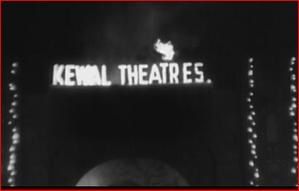
We can also interpret the destruction of the theatre as meaning the end of Kewal’s own dream of a “pure” drama, where only the heart rules. In fact, throughout the film, all of his attempts to perform or stage a play fail; never does he reach success. Is Raj Kapoor saying here that art can only be impure, a mixture of artifice and truth, and love a necessary combination of passing (i.e. false) beauty and eternal promises? Aag would therefore be his statement that the artist must be wise enough to accept compromise? That he cannot remain in the dream of ideal beauty? Or on the contrary, does the film idealistically state that the artist must burn whatever compromises his dream of purity, and that beauty is nothing but an artifice of nature that the spirit should disregard as false? Much of the weight of the film would suggest that this second interpretation corresponds to what Raj Kapoor is saying. A theatre or a cinema based on beauty without a quest for the depth of the heart is doomed to remain earthly and false. It is a theatre/cinema of masks, which medusa-like, can burn and transfix, whereas what RK wants is an art of the real fire, that of the soul, where truth lies.
The real love which Kewal takes as a yardstick, is, in his own words, a dream, a faraway dream of “a century ago, when he was ten years old”, that child’s complicity he shared with his little neighbour Nimmi, the first and real Nimmi. Strange that such a dream should be construed as the basis for the mature artist’s position concerning his art. Childhood as the font where all truth comes from? This would sound evangelical enough. Unfortunately, the film deals with beauty in a sufficiently ambiguous way to enable another interpretation. For indeed, if there is an object which it puts to good use, which it presents as sublime and ideal, it is Nargis’ exquisite face. She is continuously photographed in a way that tells the spectator: here is purity, here is what art can aspire to.
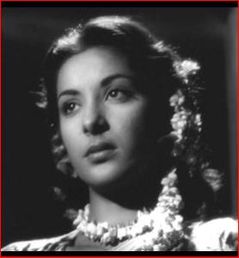
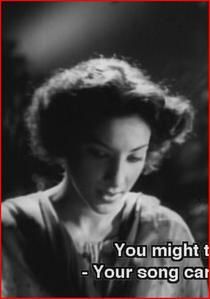
Naturally, we would do a disservice to Raj Kapoor if we decided that such a face was an end in itself; certainly he wanted to say: this face is perfection on earth if it is the mirror of the soul, the passage to the heart. Nevertheless, he is too much of an artist to ignore the ambiguity of beauty, and his insistence on that face, the care he takes to illuminate it, and almost shape it with his camera like a sculptor, turn it into a cinematographical object worthy of admiration and love. Beauty is understood as a sign, a sign indicating, in our imperfect world, the ideal world of truth and love. The way if is photographed, and of course the way it is connected to Nimmi’s character (she’s an honest and innocent girl) makes a divine sign, and not a satanic lure. Nimmi does say she “comes from Hell” when she meets Kewal for the first time, but I would say this is part of what Raj Kapoor wants to affirm, and this affirmation is contradicted by his deeper (and perhaps unconscious?) recognition of what he has shown us in Nimmi’s face.
So Aag stages the paradox of art (or theatre) that many thinkers have underlined: in order to reach truth and purity, the creator has to refuse the passage through facile beauty and artificiality, but of course he bumps into the fact that theatre is in its essence artificial and that beauty is a very strong language to express the way towards purity and love. Some creators think perhaps they can reach truth better or faster by sacrificing the flesh and its charms, and therefore attaining the spiritual more certainly. Because indeed beauty does deceive, it is easily turned into a charm to obtain other ends than truth and purity. Yet, if it can be sheltered enough by civilisation, by education, by social protections, it can be a guide towards the divine in man, and no art can really afford to neglect that completely. If fire is domesticated, it can yield the greatest benefits! There is always a risk that it will burn somebody, if it is too bright, too hot; but how can one prevent that? Civilisation constantly needs to be renewed by the fire of beauty and the warmth of passion, otherwise it will die of cold and old practices.

So one could say that Raj Kapoor has taken as much Kewal’s side as he has decided to criticise him: sacrifice is virtuous and beauty is a cheat; but equally one can say that beauty is god-sent and that our nature must be accepted as it is. Real art doesn’t necessarily need to follow nature, of course, but it does not necessarily need to destroy it in order to reach a form which will be more pleasing. This is where personal choice will come into play. Some artists will prefer insisting on art’s mission as an improver of nature (perhaps seen as imperfect, or fallen?); others will favour a creation which will use nature’s potential (and rich ambiguities?) in order to express a truth that is hidden inside it. The interest of Raj Kapoor’s movie is that he suggests both ways.
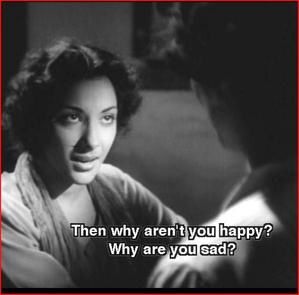
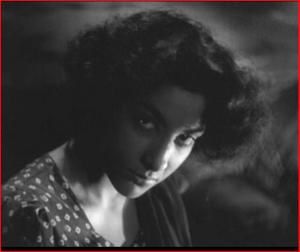
/image%2F1489169%2F20200220%2Fob_9722d6_banner-11.JPG)